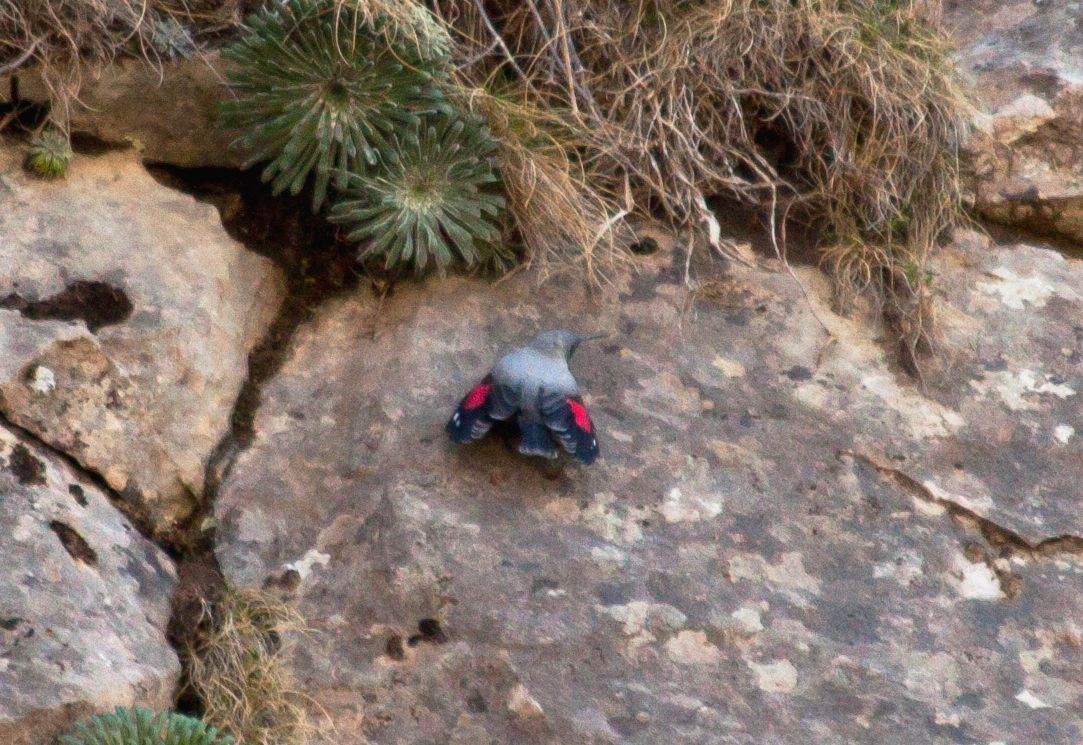Day 1 – Barcelona to Zaragoza
Monk Parakeet – 13th April – Barcelona city
centre (Placa de les Heroines de Girona)
Purple Heron –13th April – Route from
Barcelona to Zaragoza (two flying over)
White Stork – 13th April – Route from
Barcelona to Zaragoza (flying over)
Fan-Tailed Warbler – 13th April – Small track
off roundabout off LL11, Lleida (displaying in fields by the side of the track)
Spotless Starling – 13th April – Small track
off LL11, Lleida (In trees by small building by the side of the track)
Crested Lark – 13th April – Small track off
roundabout off LL11, Lleida (on the wall by the side of the track)
Serin – 13th April – N240, Lleida (in small
courtyard by abandoned warehouse)
Penduline Tit – 13th April – Avinguda
President Josep, Tarradellas, off the N240, Lleida (in small reedbed by the
side of the road)
Bee-eater – 13th April - N211, opposite Calle
la Via, Torrente de Cinca, Huesca, near the Rio Cinca (flying overhead and on
wires)
Griffon Vulture – 13th April – Route from
Barcelona to Zaragoza, around Mequinenza (circling overhead)
Sardinian Warbler – 13th April – N211,
Mequinenza, Zaragoza, near the Rio Segre (in shrubs by the side of the road)
Crag Martin – 13th April – N211, Mequinenza,
Zaragoza, near the Rio Segre (flying along mountains by side of the road)
Red-rumped Swallow – 13th April - N211,
Mequinenza, Zaragoza, near the Rio Segre (flying over the river)
Short-toed Treecreeper – 13th April – Car park
off N211 overlooking the Rio Segre near Mequinenza (in trees off footpath by the
river)
Southern Grey Shrike – 13th April –N211 on the
way to Caspe from Lleida (sitting in a shrub by the side of the road)
Calandra Lark – 13th April – N232, Zaragoza
(flying by the side of road in fields)
Montagu’s Harrier – 13th April – Road from Belchite
to Codo (flying across ridge by side of the road)
Day 2 – Zaragoza to Loporzano
Dupont’s Lark – 14th April – Near Codo and Belchite, Zaragoza (8 individuals
showing well and singing)
Lesser Short-toed Lark – 14th April - Near Codo and Belchite, Zaragoza (in muddy field at
the side of path)
Thekla Lark – 14th April - Near Codo and Belchite, Zaragoza (numerous individuals
showing well)
Black-eared Wheatear – 14th April - Near Codo and Belchite, Zaragoza (two flying and
perching in large muddy fields down the track)
Pin-Tailed Sandgrouse – 14th April - Near Codo and Belchite, Zaragoza (three walking in
the fields down the track)
Black-bellied Sandgrouse –14th April - Near Codo and Belchite, Zaragoza (two flying and walking
in the fields down the track)
Rock Sparrow – 14th April – Antiguo Belchite
off the A-222 Belchite, Zaragoza (on bombed church ruins)
Blue Rock Thrush – 14th April - Antiguo
Belchite off the A-222 Belchite, Zaragoza (on bombed church ruins)
Black Wheatear – 14th April - Antiguo Belchite
off the A-222 Belchite, Zaragoza (on bombed church ruins)
Black Kite – 14th April - Route from Zaragoza
to Loporzano – A23 Zaragoza
Booted Eagle – 14th April – Route from
Zaragoza to Loporzano – A23 Zaragoza (circling by the side of the road)
Western Bonelli’s Warbler – 14th April - Embalse
de la Sotonera, Huesca (In shrubby trees by the side of the lake)
Cirl Bunting – 14th April – Embalse de la
Sotonera, Huesca (In shrubby trees by the side of the lake)
Day 3 – Valle de Hecho - Pyranees
Egyptian Vulture – 15th April – Route from
Loporzano to Valle de Hecho – A132 (soaring over mountains)
Alpine Chough – 15th April - Parque Natural de
los Valles Occidentales - Valle de Hecho, Huesca (Flying overhead over the
mountains)
Crested Tit – 15th April - Parque Natural de
los Valles Occidentales - Valle de Hecho, Huesca (in trees by cliff face)
Lammergeier – 15th April – Parque Natural de
los Valles Occidentales - Valle de Hecho, Huesca (Flying overhead on trail)
Wallcreeper – 15th April - Parque Natural de
los Valles Occidentales - Valle de Hecho, Huesca (On cliff face, calling and
showing well)
Rock Bunting – 15th April - Parque Natural de
los Valles Occidentales - Valle de Hecho, Huesca (On rocks on trail down to
waterfall)
Scops Owl – 15th April – In trees in the park
off Calle Rioja, Huesca city centre (showing in tree near gates)
Day 4 – Loporzano to Zaragoza
Subalpine Warbler – 16th April - Viewpoint on
A1603 near Santa Cruz de la Seros (showing well in trees by the side of the
road)
Black Woodpecker – 16th April – Viewpoint at
Monasterio de San Juan de la Pena (Monestario alto)
Citril Finch – 16th April – On the road up to
the car park at Monasterio de San Juan de la Pena (feeding on the road)
Day 5 – Zaragoza to Barcelona
Greater Flamingo – 17th April – Two on the
lake at Laguna de Gallocanta
Additional Birds




































































